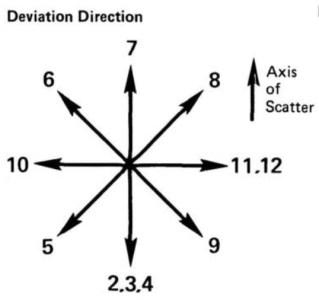If there is not an extant Mongoose rule, this is what I was thinking:
Blast weapons should target area map points not necessarily people.
Roll the attack and if it misses, note the effect level of the miss.
Imagine the target square in a hex (if there is no hex already) and Roll 1D6 for direction (example; 1 is long, 2 is long/right, 3 is short/right, 4 is short, 5 is short left, 6 is long left.
If they miss, then the blast effect happens in the direction above away from the target point equal to the effect level of the miss in meters. (miss by 1 then only off by 1 meter).
Yes, they may still effectively hit the target anyway, but that is ok. They just wont have it perfectly centered. The bigger the blast the less likely it will matter if they miss by a bit, as it should be. There is a reason why people say " 'close' only counts in horseshoes and hand grenades"
This works for hand grenades and weapons that detonate based on targeted location, but maybe not so much weapons that use direct fire with contact detonators for their blast. (a low tech RPG round for example). That's ok too I think as the rule above is game-play simple enough.
I might also consider borrowing "cone of effect" or "danger zone" (queue Archer quote) rules from MgT and other systems for this if it is not too cumbersome or breaks game play.
Still was hoping for something in the Mongoose canon though... or "cannon" as the case may be. (<-- see what I did there?)

